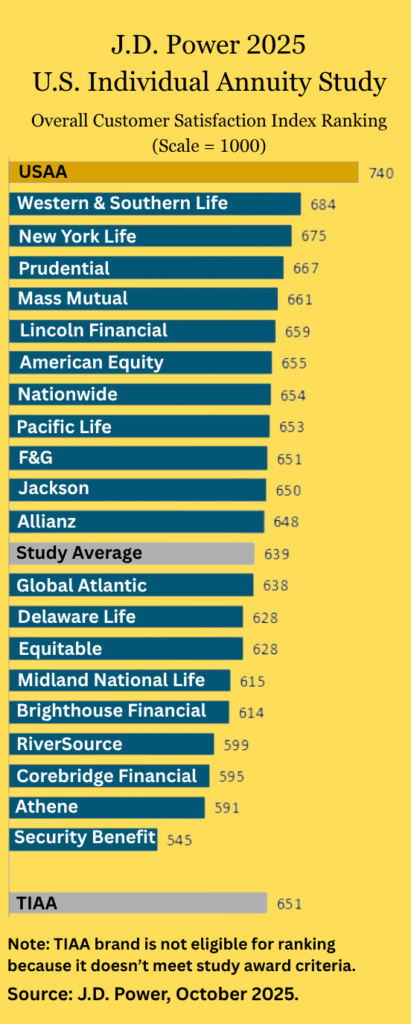Few people in the financial services industry have been as productive and influential in so many ways as Bob C. Pozen. The 69-year-old Harvard-and-Yale-educated lawyer has served as president of Fidelity Investments, as chairman of MFS Investments, as a presidential adviser and SEC official, as a research fellow at the Brookings Institution and, currently, as a lecturer at MIT. He has written books on topics both macro (the mutual fund business, the Global Financial Crisis) and micro (personal time management).
Back in October, Pozen moderated a panel on Innovative Retirement Products at the 2015 Fall Journal of Investment Management conference at the MIT Sloan School of Management. The panelists included Peggy MacDonald of Prudential Financial’s pension risk transfer business and Tom Reid of Sun Life Financial of Canada.
During the panel discussion, Pozen spoke favorably about the usefulness of annuities in mitigating longevity risk. In a recent phone conversation with RIJ, he expanded on some of his views regarding retirement.
RIJ: Greetings, Bob. Ten years ago, I bought your book, The Mutual Fund Business. And I know that the second edition of your book, The Fund Industry: How Your Money Is Managed, came out in early 2015. So it’s a privilege to talk with you in real time. Judging by your comments at the JOIM conference, you sounded like a fan of annuities.
Pozen: I didn’t say I liked all annuities. I said I like the concept of longevity annuities. What’s good about them is that payouts don’t start until you’re 80 or 85 years old, which makes them relatively inexpensive. They also serve a planning need. It’s easier to create a financial plan that stops at age 80 than to plan for an unknown lifespan. And, the way the Treasury rules work now, you can also get a pass on the RMD rules up to about $125,000 when you buy a longevity annuity with tax-deferred savings.
RIJ: You’re talking about the Qualified Longevity Annuity Contract, which the Treasury Department introduced in 2015. Some people think the cap on QLAC contributions of $125,000 doesn’t offer upper-income people a large enough tax incentive to give up so much liquidity, while the cap of 25% of qualified savings won’t let middle-income people buy a meaningful amount of income with their smaller IRA balances. What do you think of those concerns?
Pozen: Despite what economists may say about the high value that people place on optionality, putting 25% in a longevity annuity seems like a reasonable insurance policy while still leaving you with flexibility.
RIJ: There’s been a lot of debate over whether the U.S. is experiencing a retirement “crisis.” The Center for Retirement Research at Boston College says that 52% of American households are at risk of not being able to maintain their current lifestyle in retirement. But the Investment Company Institute and others say that income from 401(k)s has been underestimated or overlooked in official statistics, and that most retirees will do just fine. Do we have a crisis?
Pozen: There is a retirement-related set of problems. Whether there’s a crisis or not is a different question. For some income groups, there is not a crisis. There are others who will depend entirely on Social Security for their retirement income. Then there’s a middle ground made up of people who have not saved enough for retirement. It’s clear that some of them should save more. But how much more, we don’t know. We have all these people who say they want to save more but don’t.
RIJ: Why do you think they don’t save?
Pozen: A lot of them don’t have a 401(k) plan at work and they don’t set up their own IRAs. Roughly half of employees in the United States don’t have retirement plans at work and inertia seems to prevent them from saving on their own. We also know there are lots of employers choosing not to participate in that system. Some are small employers, some are in the agriculture and retail sectors.
RIJ: The Obama administration recently went live with its MyRA program of workplace IRAs that use existing payroll systems without requiring the employer to sponsor a full-blown retirement plan. And a few states, including California, are in the process of setting up state-sponsored retirement plans with mandatory participation by most employers and automatic enrollment of workers. What do you think about those state “public option” plans?
Pozen: I’m in favor of the automatic IRA. As for the state plans, I think it would be better to have a federal system than to have three states doing it.
RIJ: Another of today’s big public policy issues involves the Department of Labor’s proposed “conflict of interest rule” that will extend DOL jurisdiction to rollover IRAs and raise the standard of advice on IRA money to a fiduciary level. Have you looked at that issue?
Pozen: I’m not very familiar with the details of that, so I can’t comment.
RIJ: When George W. Bush was president, you advised his administration on Social Security policy. What were your ideas for reforming Social Security?
Pozen: I came up with a plan called “progressive indexing.” The thrust of it was that Social Security benefits are growing faster than the Consumer Price Index because they’re linked to wage growth. Wages on average rise about one percent faster than prices. My proposal was to link the growth of benefits of the upper third of earners to CPI growth while letting the benefits of the lower third of earners continue to rise with the wage index. This strategy would cut the program’s long-term deficit somewhere in half.
RIJ: Wouldn’t that introduce a form of “means-testing,” which might not be very popular?
Pozen: It’s not means-testing. Means-testing would mean that you’d get nothing from Social Security if you are among the high earners. My plan is more like “means-tilting.” I’d be reluctant to suggest that the people in the top third get nothing from Social Security. That would undermine popular support for the program.
RIJ: But your idea wasn’t incorporated into the Bush administration’s Social Security reform plan, right?
Pozen: For a while, my idea had a lot of traction. President Bush linked it to Social Security privatization, which became his administration’s main policy recommendation. But the ideas are separate, if by privatization you mean a carve-out of Social Security taxes where you divert, say, 5% of the FICA tax into private accounts. But if you diverted FICA taxes you’d have to put all of the money into Treasuries, or the program would be too risky. It’s hard to get good deals on investments.
RIJ: Some conservatives have recommended raising the full retirement age, or FRA, as a way to close the Social Security funding gap. What do you think of that type of reform?
Pozen: There are a lot of difficult issues associated with raising the FRA. There’s an issue involving people who can no longer do physical work. If they have to wait longer for Social Security benefits, will there be suitable jobs for them while they’re waiting? Another issue is that a lot of lower earners won’t get that much from Social Security anyway because of the big longevity gap between upper earners and lower earners. My proposal is more income-based than retirement age-based. To me, it goes to the heart of the problem. We’re already moving to age 67 for the FRA, but if we go to age 70 a lot of workers would get nothing. Raising the FRA may sound attractive at first but we have to be careful.
RIJ: Some liberals have recommended increasing in the level of income that’s subject to payroll taxes, currently set at $118,000. Do you think that’s a good idea?
Pozen: I’ve seen proposals to raise the FICA limit to $200,000, but that’s really whacking certain people. That’s putting a big new tax on people who don’t consider themselves wealthy. I would rather see a 2% surcharge on all income above the current FICA limit.
RIJ: The next time we have a public debate on the future of Social Security, the question of whether the “trust fund” is real will undoubtedly come up again. Is the trust fund “real”?
Pozen: That’s a false question. The Treasuries in the trust fund are IOUs from one part of the government to another. It’s a trust fund that’s filled with intra-governmental obligations. When it’s time to cash out those special Treasuries, the money will have to come from the federal budget. So Congress would need to appropriate the money but then probably have to borrow it. It’s kind of circular.
RIJ: Switching to another topic entirely, what do you think of the rise of the robo-advisors?
Pozen: I’ve had some experience with robo-advisors, and I think they do a good job with smaller amounts of money. From $50,000 to $100,000, say. But they don’t offer customization, at least not in the way that some people think they do. They do serve a purpose, however.
RIJ: Robo-advice seems to me to be just another name for an Internet-driven trend toward disintermediation of advisors and direct distribution of investment products and services. One survey showed that when people are asked which robo-advisors they know of, they mention direct providers like Fidelity, Vanguard and Schwab.
Pozen: Robo-advice is more than direct distribution. It’s direct distribution in a particular way. And I think Vanguard was very smart to start its own robo-advisor.
RIJ: You’ve worked in a Republican administration and you’ve been associated with the liberal-leaning Brookings Institution. You’ve also been a senior executive of large financial services companies. That makes it tough to place you on the political spectrum. Where would you place yourself?
Pozen: I’m a moderate Democrat, which means that I’m fiscally conservative and socially liberal.
RIJ: Thank you, Bob.
© 2015 RIJ Publishing LLC. All rights reserved.








